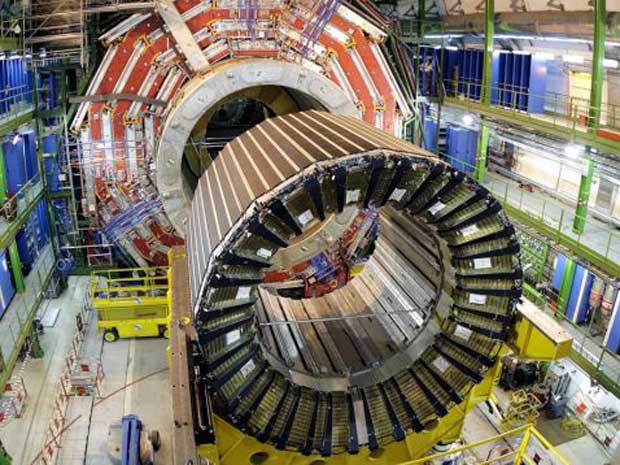Discovery of 'Higgs boson' signals a Eureka moment in understanding of the Universe

Your support helps us to tell the story
From reproductive rights to climate change to Big Tech, The Independent is on the ground when the story is developing. Whether it's investigating the financials of Elon Musk's pro-Trump PAC or producing our latest documentary, 'The A Word', which shines a light on the American women fighting for reproductive rights, we know how important it is to parse out the facts from the messaging.
At such a critical moment in US history, we need reporters on the ground. Your donation allows us to keep sending journalists to speak to both sides of the story.
The Independent is trusted by Americans across the entire political spectrum. And unlike many other quality news outlets, we choose not to lock Americans out of our reporting and analysis with paywalls. We believe quality journalism should be available to everyone, paid for by those who can afford it.
Your support makes all the difference.It has taken nearly half a century of deep thought, more than 30 years of painstaking experimentation and a massive £2.6bn machine to find. Yesterday, scientists said they believed they had finally located the subatomic particle which confirms our understanding of how the Universe works.
Discovering the so-called "Higgs boson" particle would be one of the greatest achievements in science, rivalling the discovery of the structure of DNA in 1953 and the Apollo Moon landings of the 1960s and 1970s. It can explain why some particles have mass, but why others, such as photons of light, do not.
Although yesterday's discovery is consistent with such a particle – first postulated half a century ago by the retired British physicist Peter Higgs – scientists at the European Organisation for Nuclear Research (Cern) in Geneva stopped short of saying this was definitely what they had found.
Yet such is the degree of exactitude to which they work, they were still able to calculate that the new particle is very near to the "five-sigma" level of significance – meaning that there is less than one in a million chance that their results are a statistical fluke.
A Higgs boson particle is essential to the so-called Standard Model of physics – the generally accepted theory about how the Universe works. Finding it would effectively confirm the Standard Model, explaining the results of countless physics experiments and why other particles behave the way they do.
One Nobel prize-winning physicist famously called it the "God particle" because of its central role in theoretical physics – although Professor Higgs and his colleagues at Cern have come to despise the term and its religious undertones.
Higgs, 83 and retired from the University of Edinburgh, was in the audience yesterday in Geneva to hear the results of the two largest experiments attached to the Large Hadron Collider, the circular underground machine that smashes sub-atomic particles together at enormous energy levels.
Both sets of experiments had neatly and independently confirmed the existence of a new sub-atomic particle with a mass of about 125.5 GeV (gigaelectron volts), which is about 133 times heavier than the protons at the heart of every atom.
"As a layman, I would say that I think we have it. Do you agree?" said Rolf Dieter Heuer, director general of Cern, at the end of the presentations. The rapturous applause that met his hypothetical question said it all.
Join our commenting forum
Join thought-provoking conversations, follow other Independent readers and see their replies
Comments